The 30 Safest Places to Live in the U.S. – Community Safety Data
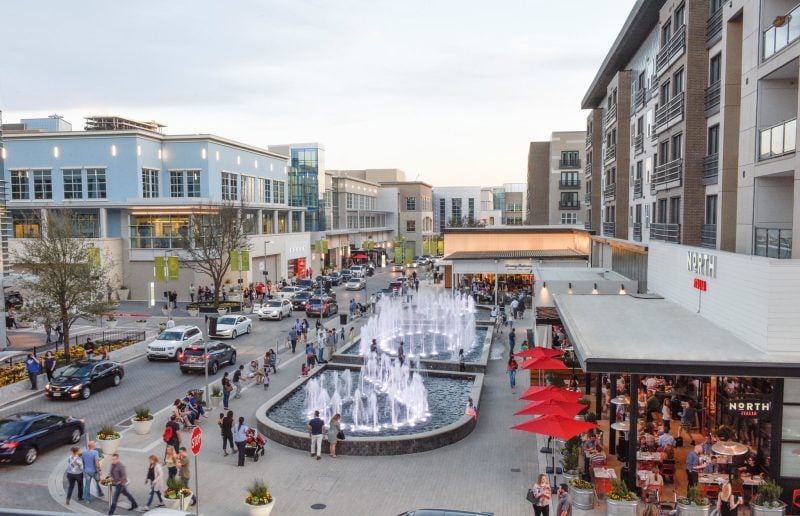
Finding a safe place to call home ranks among the most important decisions families and individuals make when relocating. Safety encompasses multiple factors including violent crime rates, property crime statistics, emergency preparedness, and overall community well-being.
This comprehensive analysis examines thirty cities across the United States that consistently demonstrate exceptional safety records and provide secure environments for residents.
From coastal communities to inland metropolitan areas, these locations span diverse geographic regions and offer various lifestyle options while maintaining low crime rates and strong community safety measures.
Here are the 30 safest places to live in the U.S.
1. South Burlington, Vermont
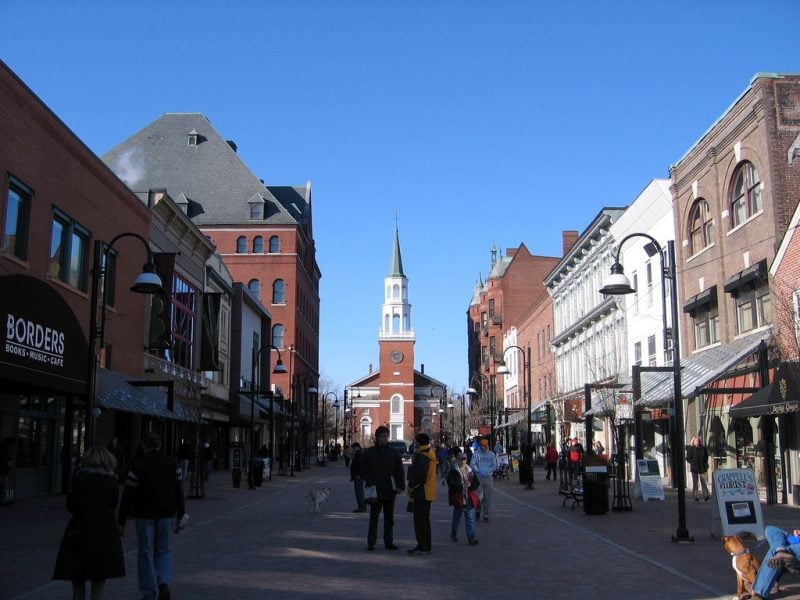
South Burlington consistently ranks as America’s safest city according to multiple safety analyses. WalletHub’s 2025 study placed South Burlington at the top of their national safety rankings.
The city benefits from Vermont’s overall safety profile. The state maintains violent crime rates 42% below the national average.
Property crime rates in South Burlington remain well below national standards. Vermont averages 19.90 property crime incidents per 1,000 residents compared to the national rate of 27.11.
South Burlington’s safety stems from comprehensive community factors. These include low crime statistics, effective emergency services, and strong community engagement.
The city attracts residents seeking secure suburban living. Its proximity to Burlington provides urban amenities while maintaining small-town safety standards.
Residents consistently rate South Burlington highly for quality of life. The community combines safety with access to Vermont’s natural recreation opportunities and economic stability.
2. Carmel, Indiana
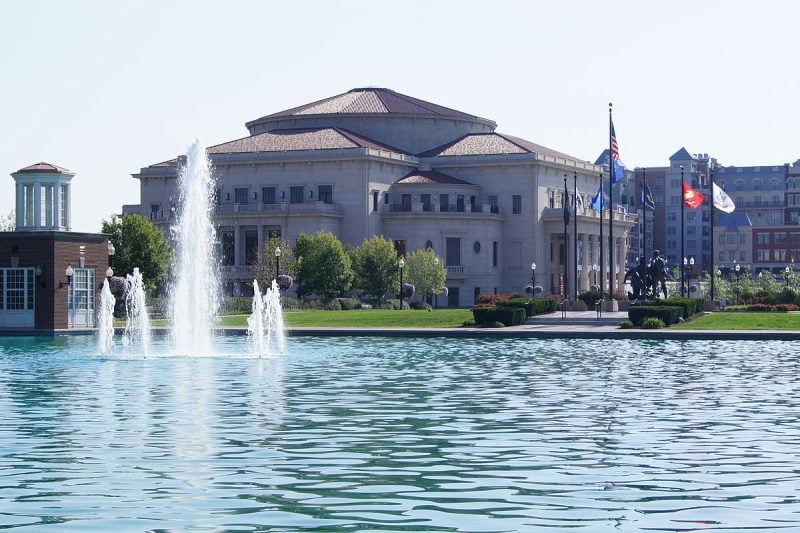
Carmel consistently ranks as Indiana’s safest major city. The community of approximately 100,000 residents maintains exceptionally low crime rates across all categories.
Safewise named Carmel the number one safest city in Indiana among populations exceeding 30,000. This designation stems from comprehensive federal crime statistics analysis.
The city’s affluent suburban environment contributes to its safety profile. Well-funded police departments and community engagement programs help maintain security standards.
Carmel’s location in Hamilton County, just north of Indianapolis, provides economic stability. The area attracts educated professionals who contribute to the community’s low crime environment.
Property crimes remain minimal compared to state averages. Violent crime incidents occur infrequently, making Carmel attractive for families and retirees.
The city invests heavily in public safety infrastructure. Modern emergency services and neighborhood watch programs enhance resident security.
3. Nashua, New Hampshire
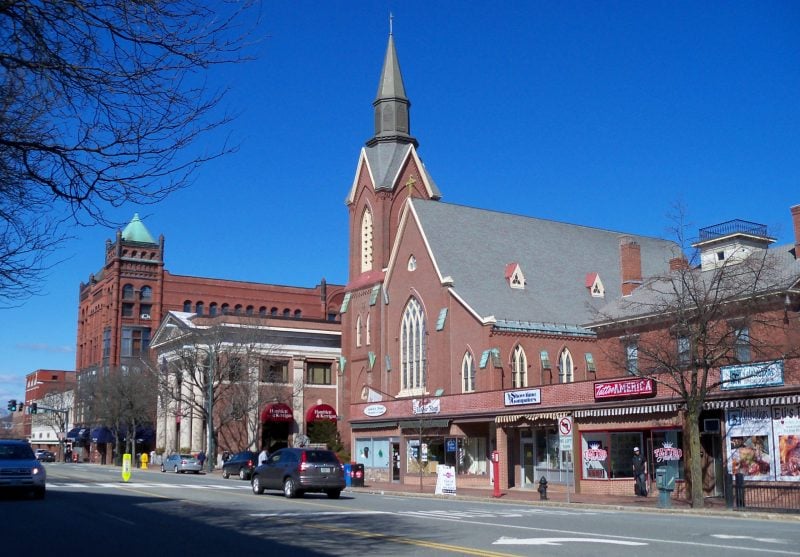
Nashua consistently ranks among America’s safest cities. The city has earned recognition from US News as one of the ten safest cities in the nation.
Crime rates in Nashua remain more than 50% below national averages. Recent data shows crime has decreased by nearly 30% year over year, demonstrating positive safety trends.
Compared to other New Hampshire communities, Nashua performs well relative to cities of similar population size. The city maintains lower crime rates than the average for comparable communities nationwide.
Nashua’s safety profile extends beyond basic crime statistics. The combination of low crime rates and community engagement creates an environment where residents feel secure.
The city’s consistent safety rankings reflect effective law enforcement and community programs. These factors contribute to Nashua’s reputation as a desirable place to establish residence for families and individuals seeking security.
4. Columbia, Maryland

Columbia consistently ranks among America’s safest cities. The planned community in Howard County earned the number 8 spot on WalletHub’s 2024 list of safest cities in America.
This achievement follows an impressive track record. Columbia held the top position as America’s safest city in 2020, 2021, and 2022. In 2023, it ranked second nationally.
The city’s safety reputation extends beyond crime statistics. Columbia regularly appears on lists recognizing it as the best place for jobs and overall quality of life.
Located between Baltimore and Washington D.C., Columbia benefits from its strategic position. The community was designed with safety and livability as core principles when it was developed in the 1960s.
Crime rates remain significantly lower than national averages. The planned nature of the community contributes to its safe environment through thoughtful urban design and strong community engagement.
5. Irvine, California
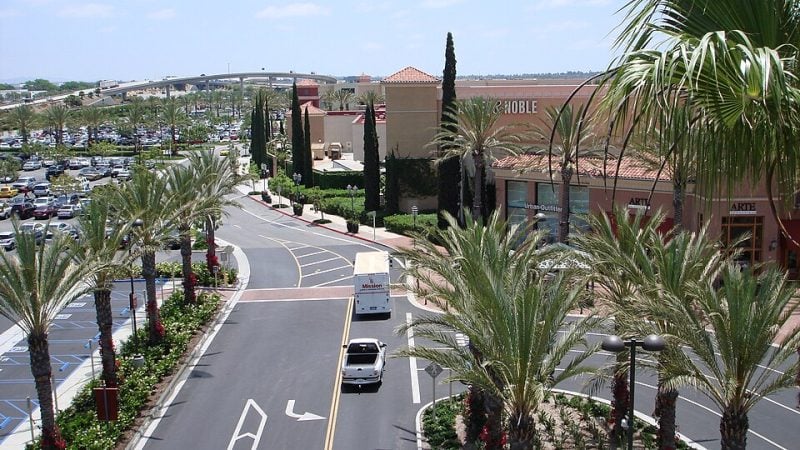
Irvine consistently ranks as America’s safest city among cities with populations over 250,000. The FBI has recognized Irvine for this distinction for 16 consecutive years based on violent crime statistics.
Crime rates in Irvine are 28% lower than the national average. The city is 90% safer compared to other California cities and 70% safer than U.S. cities on average.
Most crimes in Irvine are non-violent in nature. The city’s planned community design contributes to its safety record through well-maintained streets and strong community involvement.
Irvine’s safety profile makes it attractive to families seeking secure neighborhoods. The combination of low crime rates and excellent schools has established the city as a premier residential destination in Southern California.
6. Plano, Texas
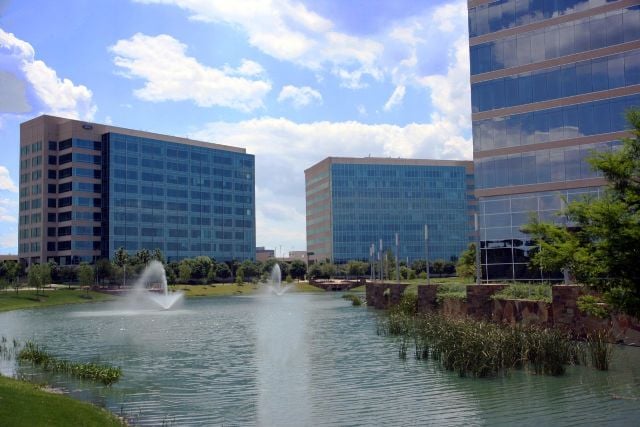
Plano consistently ranks among America’s safest cities. The city’s violent crime rate stands at 13 per 100,000 residents, significantly below the national average of 22.7.
Major crime rates dropped 11.1% in 2024 according to police department statistics. This suburban Dallas community ranks 17th for safety among all Texas cities.
The city maintains its reputation through effective policing and community engagement. Residents experience lower rates of assault, robbery, and other violent crimes compared to most urban areas.
Plano attracts families seeking secure neighborhoods with strong economies. The affluent community offers well-maintained residential areas and active local safety programs.
Law enforcement presence remains visible throughout the city’s districts. Crime prevention initiatives and neighborhood watch programs contribute to the area’s safety record.
7. Fort Collins, Colorado

Fort Collins offers residents a combination of safety and quality of life in northern Colorado. The city maintains crime rates below both national and state averages.
This college town of approximately 169,000 people has earned recognition for its livability. Fort Collins was ranked as the most peaceful place to live in the U.S. by Insider Monkey in 2023.
The city consistently appears on various “best places to live” lists. Forbes ranked Fort Collins as the top place to live in Colorado, ahead of Denver and Colorado Springs.
Residents benefit from short commute times averaging 17 minutes. The city has also received recognition as the number one cycling city in America, reflecting its walkable and bike-friendly infrastructure.
Fort Collins combines the amenities of a larger city with a more manageable size and strong safety record.
8. Madison, Wisconsin
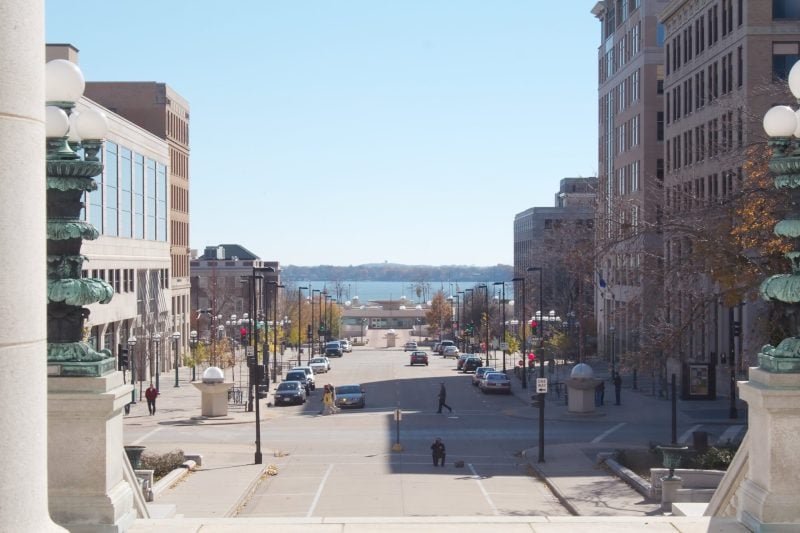
Madison ranks as the 10th safest place to live in the United States according to U.S. News and World Report. The ranking considers crime rates per 100,000 people based on FBI crime reports.
The city’s crime rate sits at approximately two-thirds of the national average. This makes Madison significantly safer than most American cities of comparable size.
Wisconsin’s capital offers residents numerous safe neighborhoods throughout the metro area. The city combines low crime statistics with other quality-of-life benefits like affordable living costs.
Madison’s safety profile has helped establish it as one of the most desirable places to live in the Midwest. The metro area consistently performs well in national safety rankings.
Property crime and violent crime rates both fall well below national benchmarks. This creates an environment where residents can feel secure in their daily activities.
9. Scottsdale, Arizona
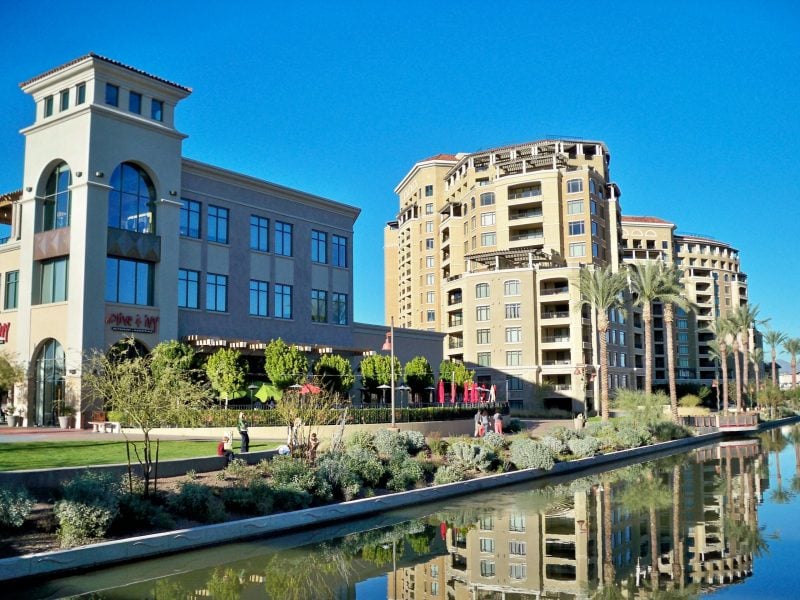
Scottsdale consistently ranks as one of Arizona’s safest cities. The community maintains low crime rates across both violent and property crime categories.
This desert city attracts retirees and families seeking security. Well-maintained neighborhoods feature active community engagement and strong local oversight.
The city’s affluent areas provide additional safety through private security and gated communities. Public spaces remain well-lit and regularly patrolled by local law enforcement.
Scottsdale’s safety record stems from effective city planning and community investment. Educational institutions maintain high standards while contributing to neighborhood stability.
Residents benefit from quick emergency response times and comprehensive public safety services. The city’s tourism industry also supports enhanced security measures throughout popular areas.
10. Virginia Beach, Virginia

Virginia Beach combines coastal living with urban amenities for nearly 460,000 residents. The city maintains crime rates lower than similarly sized communities across the nation.
Located in Virginia’s Hampton Roads region, the city offers diverse neighborhoods with varying safety profiles. Green Run and Kempsville rank among the safest residential areas.
The city’s crime rate exceeds 80% of Virginia’s municipalities. However, this comparison includes smaller towns with naturally lower crime statistics.
Virginia Beach provides multiple safe neighborhoods for families and professionals. Areas like Pungo and parts of the Oceanfront district maintain strong safety records.
The city’s size allows residents to find secure communities while accessing beaches, historical sites, and recreational facilities. Norfolk sits just 30 minutes away for additional employment opportunities.
11. Bellevue, Washington
Bellevue ranks as the 8th safest city among Washington municipalities in 2024. The city maintains exceptionally low crime rates compared to national averages.
Residents face a 1 in 656 chance of experiencing violent crime. Property crime occurs at a rate of 1 in 29, which remains relatively low for urban areas.
Somerset and Newport Hills stand out as Bellevue’s safest neighborhoods. These areas consistently report the lowest crime statistics within the city.
Bellevue earned recognition as the 10th best place to live in the United States. This ranking considers crime rates, neighborhood diversity, and local amenities.
The city attracts families seeking safe communities in the Pacific Northwest. Most residents view Bellevue as one of the region’s most secure and harmonious areas.
12. Overland Park, Kansas
Overland Park stands as one of Kansas’s safest cities, ranking third for safety among all Kansas municipalities in 2024. The city maintains a violent crime rate of 16.3 per 100,000 residents, well below the national average of 22.7.
This Kansas City suburb has earned recognition beyond safety metrics. Livability.com ranked Overland Park sixth on its 2025 list of “Best Places to Live in the U.S.” The city scored high across multiple categories including safety, education, and amenities.
The community offers a family-friendly environment with strong neighborhood connections. Crime rates remain consistently low compared to national standards, though property crime occurs at slightly higher rates than violent crime.
Overland Park’s commitment to public safety and community policing contributes to its reputation as a secure place to raise families and establish roots.
13. Naperville, Illinois
Naperville consistently ranks among America’s safest cities with a crime index score of 83 out of 100. The city is considered 83% safer than other U.S. communities.
U.S. News & World Report recently ranked Naperville 19th on their list of safest places to live in America. This recognition comes alongside its ranking as the third best place to live in Illinois.
With nearly 150,000 residents, Naperville maintains a total crime rate of just 3.81 per 1,000 residents. The city offers residents top-rated schools and well-maintained parks.
Located in the Chicago metropolitan area, Naperville provides suburban safety without sacrificing urban amenities. The community features a vibrant downtown area and strong public services.
The city’s consistent safety rankings across multiple studies demonstrate its commitment to maintaining secure neighborhoods for families and individuals.
14. Thousand Oaks, California
Thousand Oaks ranks as one of America’s safest cities according to recent safety studies. Located in Ventura County’s northwestern region, this city maintains exceptionally low crime rates compared to national averages.
The city reports a crime rate of 1,172 per 100,000 residents, which sits 51% below the U.S. average. Violent crime remains particularly low at just 0.61 incidents per 1,000 residents.
With over 100,000 residents, Thousand Oaks demonstrates that large cities can maintain strong safety records. Its position in the Greater Los Angeles area provides urban access while preserving a family-friendly atmosphere.
The community benefits from tree-lined neighborhoods and proximity to both mountain landscapes and coastal areas. Local law enforcement and community engagement contribute to the city’s consistent safety rankings among California municipalities.
15. Portland, Maine
Portland, Maine ranks among the top 10 safest cities in America according to WalletHub’s annual safety rankings. The city serves as Maine’s largest urban center with approximately 67,000 residents.
Maine consistently ranks as one of the safest states in the nation. Portland benefits from the state’s overall low crime environment and strong community safety measures.
The city maintains low rates across major crime categories including violent crimes and property crimes. Local law enforcement works actively with community organizations to maintain public safety standards.
Portland’s coastal location and strong economic base contribute to neighborhood stability. The city offers urban amenities while maintaining the safety characteristics typical of smaller New England communities.
Residents enjoy access to cultural attractions, dining, and outdoor activities without compromising personal security. The city’s walkable downtown area and established neighborhoods provide safe environments for families and individuals.
16. Murfreesboro, Tennessee
Murfreesboro ranks as Tennessee’s 15th safest city in 2024. The city serves as Nashville’s largest suburb with nearly 175,000 residents.
The overall crime rate stands at 54.01 per 1,000 residents, which exceeds the national average of 33.37. Residents face a 1 in 35 chance of becoming a victim of either violent or property crime.
The southwest section of Murfreesboro is considered the safest area. Property crime rates vary significantly by neighborhood, ranging from 1 in 17 in central areas to 1 in 133 in safer districts.
Despite higher crime statistics, locals generally view Murfreesboro as a safe place to live. The city maintains its appeal as a suburban community with a 30-40 minute commute to Nashville.
Murfreesboro’s crime rate ranks higher than 89% of Tennessee’s cities and towns of all sizes.
17. Gilbert, Arizona
Gilbert consistently ranks among America’s safest cities. The community of approximately 242,000 residents sits about 20 miles southeast of Phoenix.
Multiple safety rankings place Gilbert in top positions nationally. WalletHub ranked Gilbert seventh safest in the nation among 182 cities studied. The city earned recognition as the safest city in the U.S. with a population over 250,000.
Crime rates in Gilbert remain significantly lower than national averages for similarly sized communities. NeighborhoodScout analysis confirms Gilbert maintains one of the lowest crime rates in America for its population size.
The city’s safety record contributes to its reputation as an excellent place to live. Gilbert appears regularly on lists of best places to live in the United States.
Security Baron ranked Gilbert eighth among Arizona’s safest cities with an overall score of 81.81. The consistent safety rankings reflect Gilbert’s strong community policing and low crime environment.
18. Santa Clarita, California
Santa Clarita consistently ranks among America’s safest cities year after year. The city maintains a crime rate that is 46% lower than the national average.
Located in Los Angeles County, Santa Clarita offers residents safety without sacrificing convenience. The city provides easy access to major attractions and metropolitan areas.
Santa Clarita’s violent crime rate stands at 4.95 per 100,000 residents, well below the national average of 33.37. Property crime rates are similarly low at 11.91 per 100,000 residents.
The city experiences approximately 7.59 daily crimes total, with less than one violent crime per day. Strong law enforcement presence contributes to the community’s safety profile.
Santa Clarita attracts families and young professionals seeking a secure environment. The combination of low crime rates and proximity to Los Angeles makes it an appealing residential choice.
19. Raleigh, North Carolina
Raleigh stands out as one of North Carolina’s safest major cities. The capital city combines Southern charm with modern amenities, attracting families and professionals nationwide.
Crime statistics show Raleigh performs well compared to other large North Carolina cities. The city’s overall safety record makes it attractive for residents seeking security.
Several neighborhoods offer particularly low crime rates. Five Points ranks among the safest areas, with crime rates 59% lower than the city average.
The Village District near NC State University provides safe housing for students and young adults. Northeast Raleigh also maintains reasonable safety levels despite higher population density.
Raleigh’s growth as one of America’s fastest-expanding cities hasn’t compromised its safety standards. The “City of Oaks” maintains its reputation for quality living while managing urban development effectively.
20. Champaign, Illinois
Champaign presents a mixed safety profile for residents considering relocation to this central Illinois city. The community has a crime rate higher than 89% of Illinois cities.
Residents face a 1 in 45 chance of becoming victims of violent or property crime. This statistic places Champaign below the threshold for America’s safest communities.
The cost of crime per resident reaches $109 annually. This figure falls $27 below the national average but exceeds Illinois’s state average by $2.
Champaign ranks safer than only 5% of other Illinois cities. Despite these challenges, certain neighborhoods within the city offer better safety conditions than others.
The quality of neighborhoods varies significantly throughout Champaign. Areas with higher home values typically correlate with lower crime rates and improved quality of life for residents.
21. Boulder, Colorado
Boulder ranks as the 22nd safest city in the United States according to recent safety studies. The city combines low crime rates with a vibrant community atmosphere.
Located where the mountains meet the prairie, Boulder offers residents a unique setting with peaceful neighborhoods. The city maintains high-quality public schools and friendly local communities.
Boulder has earned recognition as one of the best places to live in America by major publications. Within Colorado, more than 89% of communities report lower crime rates than Boulder.
The city provides residents with year-round activities and attractions. Its picturesque setting appeals to those seeking alternatives to ultra-urban lifestyles.
When compared to similar-sized communities nationwide, Boulder’s combined violent and property crime rates remain notably low. This safety record contributes to its appeal among families and professionals.
22. Ann Arbor, Michigan
Ann Arbor stands out as one of Michigan’s safest cities. Recent national rankings place it as the third safest city in the United States.
The college town maintains notably low crime rates compared to other Michigan communities. Data shows Ann Arbor is 33% safer than other cities in the state.
Home to over 117,000 residents, Ann Arbor anchors its own metropolitan statistical area. The city’s commitment to public safety has earned consistent recognition from safety organizations.
Ann Arbor’s crime statistics rank favorably when measured against national averages. The city performs particularly well in violent crime prevention and property crime reduction.
The presence of the University of Michigan contributes to the city’s safety infrastructure. Well-lit streets, active community policing, and engaged residents help maintain security levels.
23. Sandy Springs, Georgia
Sandy Springs earned recognition as the 17th safest city in America according to a 24/7 Wall Street report based on crime rates. This Georgia city stands out as the only location from the state to make the national list.
Located in Fulton County, Sandy Springs has a population of 107,198 residents. The city consistently receives safety rankings that place it among Georgia’s more secure communities.
Value Penguin previously ranked Sandy Springs as the ninth safest place among Georgia’s larger cities. The community attracts young professionals and families seeking a balance of urban amenities and residential security.
Sandy Springs offers residents access to quality schools and suburban living within the greater Atlanta metropolitan area. The city’s crime statistics reflect lower rates compared to many other urban centers in the region.
Recent data shows Sandy Springs maintaining its reputation as one of Georgia’s premier residential destinations for safety-conscious residents.
24. Fremont, California
Fremont earned recognition as the 17th safest city in America according to WalletHub rankings. The city stands as the only California location in the top 20 safest places nationwide.
Crime rates in Fremont continue declining annually due to effective law enforcement programs. The violent crime rate measures 6.01, significantly below the national average of 13.84.
Property crime presents a higher challenge at 27.75 compared to the national average of 19.53. Residents report incidents including vehicle break-ins and package theft in some areas.
The overall crime rate sits at 33.76, slightly above the national average of 33.37. Despite this, Fremont maintains its reputation as a safe community for families.
Strong partnerships between law enforcement and residents contribute to the city’s safety achievements. These collaborative efforts help maintain Fremont’s position among America’s safest cities.
25. Tempe, Arizona
Tempe ranks in the 7th percentile for safety among U.S. cities. This means the city is safer than only 7% of cities nationwide.
The downtown area presents additional safety concerns. Downtown Tempe ranks in the 5th percentile for safety compared to other neighborhoods.
Residents identify specific areas to avoid for safety reasons. The Apache and McClintock intersection requires extra caution. The Baseline and Priest area around the mall also presents safety challenges.
Despite safety rankings, Tempe offers other advantages. The city attracts young professionals and has a multicultural environment. International students contribute to the community’s diversity.
Tempe’s college town atmosphere creates a generally friendly environment. Most residential areas outside the identified problem zones maintain reasonable safety levels for daily activities.
26. Henderson, Nevada
Henderson consistently ranks among America’s safest large cities. Recent studies place it between second and fourth nationally for safety among major metropolitan areas.
The city earned recognition from AdvisorSmith as the second-safest large city in the United States. MoneyGeek also ranked Henderson third overall in their comprehensive safety analysis.
Located in Clark County near Las Vegas, Henderson maintains significantly lower crime rates than many comparable cities. The community benefits from effective law enforcement and well-maintained neighborhoods.
West Henderson performs particularly well in safety metrics. This area ranks in the 90th percentile for neighborhood safety compared to other locations nationwide.
Henderson’s safety profile makes it attractive to families and professionals. The city combines suburban amenities with robust public safety infrastructure that contributes to its consistently high rankings.
27. Murrieta, California
Murrieta ranks among California’s safest cities with a population of 113,783. The city holds the number 3 position for cities over 100,000 in population according to 2025 safety reports.
The violent crime rate stands at 8.5 per 1,000 residents. Property crime occurs at a rate of 23.7 per 1,000 residents.
Residents benefit from a median household income of $98,466. The city provides 52 parks and maintains 1,350 acres of open space for recreation.
Murrieta’s school system receives high rankings. Consumer Affairs recognized the city for having one of the best economies in addition to its safety credentials.
The community offers safe neighborhoods with room for families to grow. Multiple safety organizations consistently place Murrieta in their top rankings for California cities.
28. Bloomington, Minnesota
Bloomington stands as Minnesota’s most populous suburb with 87,398 residents. The city offers convenient access to both Minneapolis and St. Paul while maintaining a safe suburban environment.
The violent crime rate in Bloomington measures 12.7 per 100,000 residents. This figure sits significantly below the national average of 22.7, making it relatively secure for families.
Property crime rates register at 48.8 per 100,000 residents. While this exceeds the national average of 35.4, violent crime remains the primary safety concern for most residents.
Bloomington provides numerous outdoor recreational spaces and employment opportunities. The city’s proximity to major metropolitan areas allows residents to enjoy suburban safety while accessing urban amenities.
The community maintains well-developed infrastructure and family-friendly neighborhoods throughout the area.
29. Lincoln, Nebraska
Lincoln, Nebraska presents a mixed safety profile for residents considering relocation. The city has a crime rate of 31 per one thousand residents, which places it above the national average.
Residents face a one in 32 chance of becoming a victim of either violent or property crime. The daily crime average includes 3.08 violent incidents and 22.89 property crimes across the city.
Geographic location within Lincoln significantly impacts safety levels. The southeast part of the city is considered the safest area by residents and crime statistics.
Property crime varies dramatically by neighborhood. Residents in north neighborhoods face a one in 24 chance of property crime, while those in southeast areas have only a one in 81 chance.
High Ridge-Cushman and Capitol Beach rank as the two safest neighborhoods in Lincoln based on current crime data analysis.
30. Chandler, Arizona
Chandler ranks among the safest cities in America for its size. With a population exceeding 280,000, this suburban Phoenix area maintains exceptionally low crime rates.
NeighborhoodScout analysis shows Chandler’s crime rate is one of the lowest nationwide compared to similarly sized cities. This makes it a statistically safe place to live and work.
The safest neighborhoods include Ocotillo, Sun Groves, and Markwood North. These areas feature strong community involvement and effective security measures.
Chandler scores high in multiple safety categories beyond crime statistics. The city provides excellent job opportunities and ranks eighth nationally for women in tech careers.
The community atmosphere contributes significantly to overall safety. Residents benefit from well-maintained neighborhoods and active civic engagement throughout the city.
Understanding Safety Rankings
Safety rankings evaluate cities using specific metrics including crime statistics, emergency response capabilities, and community infrastructure. These assessments differ significantly between urban and rural environments due to varying population densities and available resources.
Criteria Used to Evaluate Safety
Most safety rankings rely on violent crime rates as their primary metric. These include murders, assaults, robberies, and sexual offenses per 100,000 residents.
Property crime statistics form another core component. Burglaries, theft, and vehicle crimes factor heavily into overall safety scores.
Emergency response effectiveness measures how quickly police, fire, and medical services respond to calls. Cities with faster response times typically rank higher in safety assessments.
Key factors evaluated include:
- Crime rates per capita
- Police effectiveness and staffing levels
- Emergency medical response times
- Fire department capabilities
- Community safety programs
Some rankings incorporate financial safety metrics. These examine unemployment rates, housing stability, and economic security factors that affect residents’ overall well-being.
Natural disaster preparedness increasingly influences safety rankings. Cities with better infrastructure and emergency planning for earthquakes, floods, or severe weather receive higher scores.
Differences Between Urban and Rural Safety
Urban areas face distinct safety challenges compared to rural communities. Higher population density in cities often correlates with increased property crime rates and traffic accidents.
Rural areas typically report lower violent crime rates but may struggle with longer emergency response times. Geographic distances between homes and emergency services create unique vulnerabilities.
Urban safety advantages:
- More police officers per capita
- Better emergency medical facilities
- Advanced fire protection systems
Rural safety benefits:
- Lower overall crime rates
- Stronger community connections
- Reduced traffic dangers
Cities offer better access to hospitals and specialized emergency services. Rural residents may wait significantly longer for ambulances or face travel distances to trauma centers.
Drug-related crimes show different patterns between urban and rural settings. Cities often deal with organized drug trafficking while rural areas face methamphetamine production issues.
Living in a Safe City: What to Expect
Safe cities provide measurable improvements to daily life through reduced crime rates and enhanced community infrastructure. Residents experience greater freedom of movement, stronger neighborhood connections, and access to well-funded public services.
Quality of Life Benefits
Personal Safety and Freedom
Residents in safe cities walk confidently at night and leave homes unlocked during short errands. Children play outside without constant supervision. Parents allow teenagers to use public transportation independently.
Reduced Stress and Anxiety
Lower crime rates eliminate the mental burden of constant vigilance. Families sleep better knowing break-ins are rare. Commuters use public transit without fear of harassment or theft.
Property Value Stability
Safe neighborhoods maintain consistent real estate values. Homes appreciate steadily over time. Insurance premiums remain lower due to reduced theft and vandalism claims.
Educational Advantages
Schools in safe cities report higher attendance rates and test scores. Teachers focus on education rather than security measures. Students participate in after-school activities without safety concerns.
Community Resources and Services
Enhanced Police Response
Safe cities typically maintain officer-to-resident ratios between 2-3 officers per 1,000 residents. Response times average under 5 minutes for emergency calls. Community policing programs foster positive relationships between officers and neighborhoods.
Well-Maintained Infrastructure
Streets receive regular maintenance and adequate lighting. Parks feature updated equipment and consistent upkeep. Public buildings operate efficiently with proper security measures.
Active Community Programs
Neighborhood watch groups meet monthly to discuss safety concerns. Local governments fund youth programs, senior services, and community centers. Business districts organize regular events that bring residents together.
Emergency Preparedness
Safe cities invest in disaster response systems and communication networks. Fire departments maintain quick response capabilities. Medical services operate at full capacity with adequate staffing levels.





